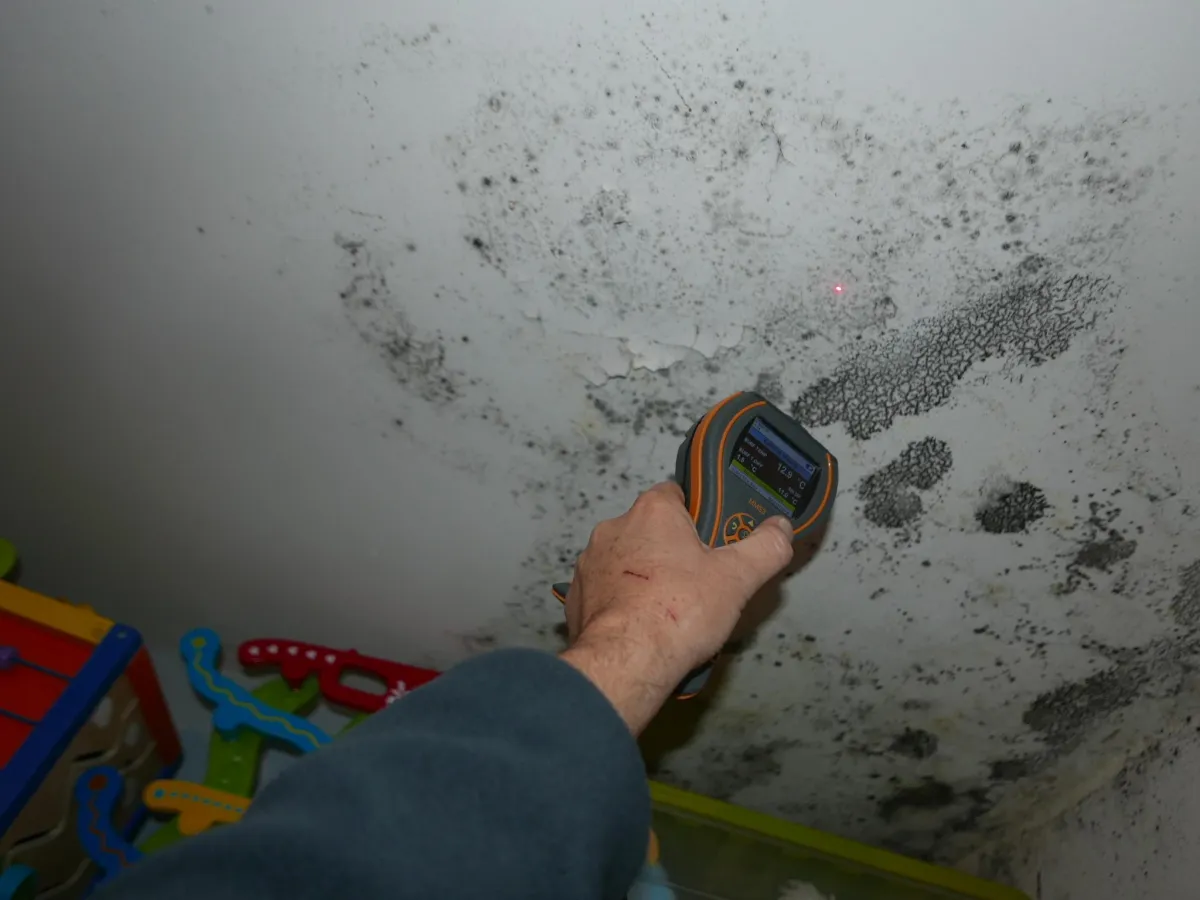
Tenant or Property? Understanding the Root Causes of Damp and Mould
Damp and mould are among the most common issues landlords face, and they can quickly escalate from small inconveniences to significant problems. But when it comes to identifying the cause of these issues, the question arises: is the tenant’s lifestyle to blame, or is the property itself at fault?
This blog post will explore the root causes of damp and mould, balancing property factors with tenant behaviours. We’ll also discuss how Damp, Mould, and Condensation (DMC) surveys and data loggers can help landlords identify and resolve these issues effectively.
Understanding the Different Types of Damp
Before diving into causes, it’s essential to understand the three primary types of damp that can affect a property:
Rising Damp: Moisture travels upwards through walls from the ground due to inadequate or damaged damp-proof courses. This is usually a property-related issue.
Penetrating Damp: Water enters the property through external defects such as damaged roofing, gutters, or cracked walls. Again, this is typically a property issue.
Condensation: The most common form of damp, condensation occurs when warm, moist air meets cooler surfaces. Condensation is often influenced by both tenant behaviours and property factors, making it a more complex issue to resolve.
Property-Related Causes of Damp and Mould
Properties themselves can be the primary source of damp and mould problems. Key contributing factors include:
1. Poor Ventilation
Insufficient ventilation prevents moist air from escaping, leading to condensation build-up. This often occurs in bathrooms, kitchens, or other areas with high humidity.
2. Inadequate Insulation
Poorly insulated properties are more prone to cold spots on walls, encouraging condensation and mould growth.
3. Defective Roofing or Plumbing
Leaking roofs, blocked gutters, or plumbing issues can introduce moisture into the property, leading to penetrating damp or structural damage.
4. Substandard Heating Systems
Inconsistent or inadequate heating leaves areas of the property cold, increasing the likelihood of condensation.
Tenant-Related Causes of Damp and Mould
While properties themselves are often at fault, tenant behaviours can significantly contribute to damp and mould issues. Common habits that exacerbate these problems include:
1. Drying Clothes Indoors
Hanging clothes to dry indoors without adequate ventilation introduces excessive moisture into the air, leading to condensation.
2. Lack of Ventilation
Tenants who keep windows closed, fail to use extractor fans, or block trickle vents can create conditions where moisture becomes trapped inside the property.
3. Underheating the Property
Not using the heating system or keeping the property at low temperatures can result in cold surfaces, increasing the risk of condensation.
4. Poor Cleaning Practices
Failing to clean surfaces prone to condensation can allow mould to develop and spread unchecked.
The Importance of Identifying the Root Cause
In many cases, damp and mould are caused by a combination of property-related factors and tenant behaviours. For landlords, identifying the root cause is crucial to taking appropriate and effective action. Misdiagnosing the issue—for example, blaming tenants for something caused by structural defects—can lead to unresolved problems, tenant dissatisfaction, and potential legal claims.
How DMC Surveys Help Diagnose Damp and Mould Issues
Damp, Mould, and Condensation (DMC) surveys are a critical tool for landlords who want to get to the bottom of these problems. Here’s how they work:
1. Full Property Assessment
DMC surveys involve a comprehensive inspection of the property to identify structural defects, ventilation issues, or heating inefficiencies that may contribute to damp and mould.
2. Tenant Consultation
Surveyors engage with tenants to understand their heating and ventilation habits, such as whether they use extractor fans or dry clothes indoors. This helps pinpoint behavioural contributions to the issue.
3. Advanced Tools and Testing
Using professional-grade equipment such as damp meters and anemometers, surveyors can gather accurate data to diagnose the problem. Thermal imaging can also detect cold spots that may lead to condensation.
4. Actionable Reporting
The final report provides landlords with clear, actionable recommendations, whether that means upgrading insulation, repairing defects, or educating tenants about proper ventilation practices.
The Role of Data Loggers in Long-Term Monitoring
For properties with recurring damp and mould issues, data loggers can provide invaluable insights over time. These devices monitor temperature and humidity levels, helping landlords:
Identify whether issues are due to tenant behaviours or property defects.
Monitor the effectiveness of ventilation and heating systems.
Build evidence for regulatory compliance or tenant disputes.
What Landlords Can Do
To effectively manage damp and mould issues, landlords should:
Invest in Regular Inspections Schedule DMC surveys to identify issues before they escalate.
Educate Tenants Provide tenants with guidance on maintaining proper ventilation, heating, and cleanliness to reduce behavioural risks.
Address Property Defects Ensure your property’s insulation, ventilation, and heating systems are up to standard. Fix any structural defects promptly.
Use Data Loggers Monitor property conditions over time to ensure long-term prevention of damp and mould.
Conclusion
Damp and mould are rarely caused by just one factor. By understanding the interplay between tenant behaviours and property conditions, landlords can take informed steps to resolve these issues effectively. Services like DMC surveys and data loggers provide the insights needed to protect your properties, keep tenants satisfied, and stay compliant with housing regulations.
If you’re struggling with damp, mould, or condensation in your rental properties, Redfearn Experts can help. Contact us today to book a DMC survey and take the first step towards healthier, safer homes.